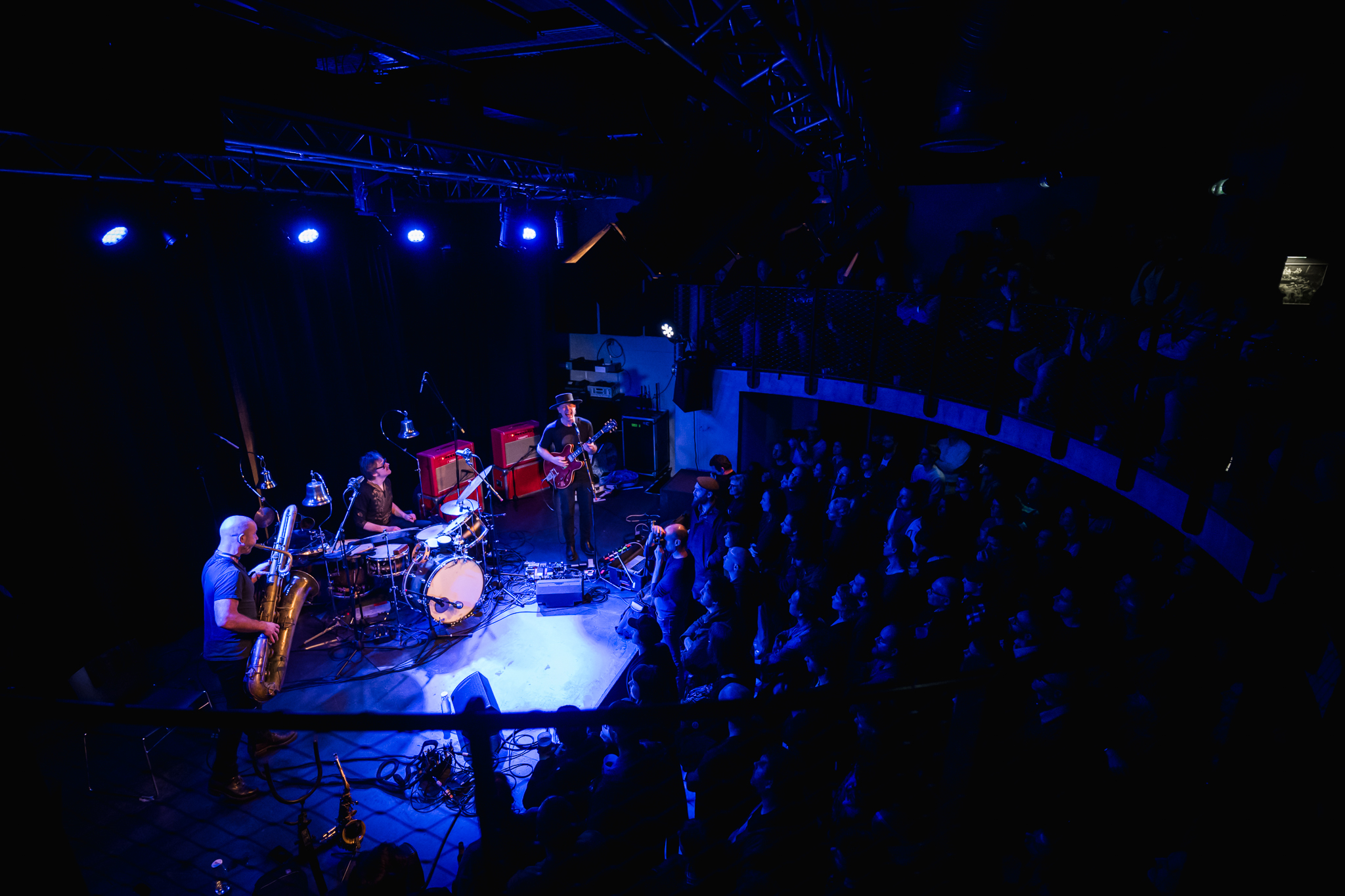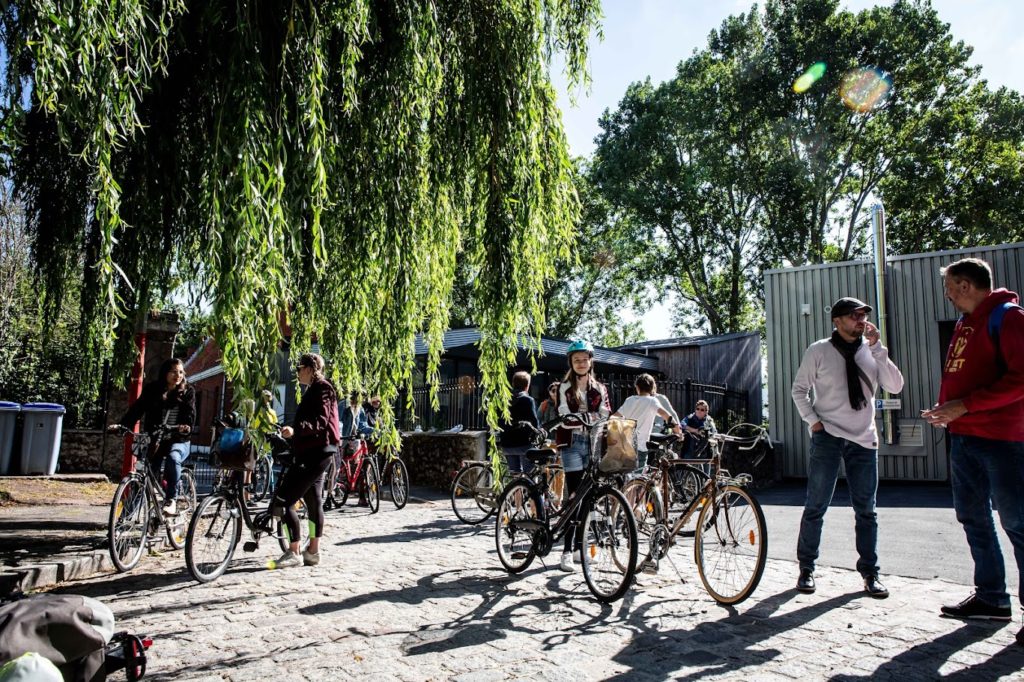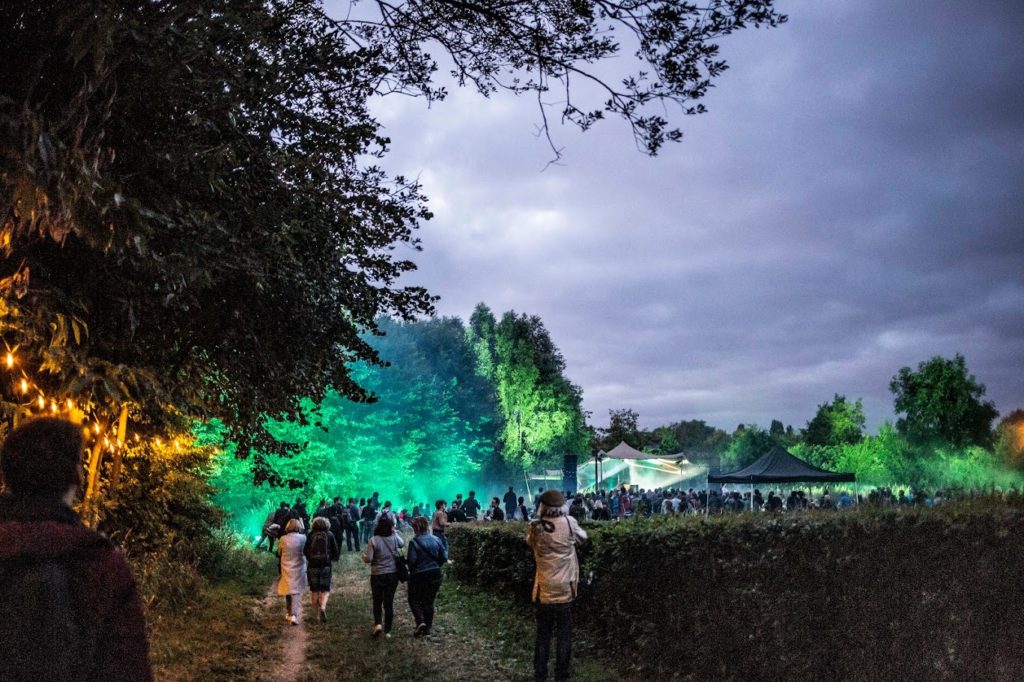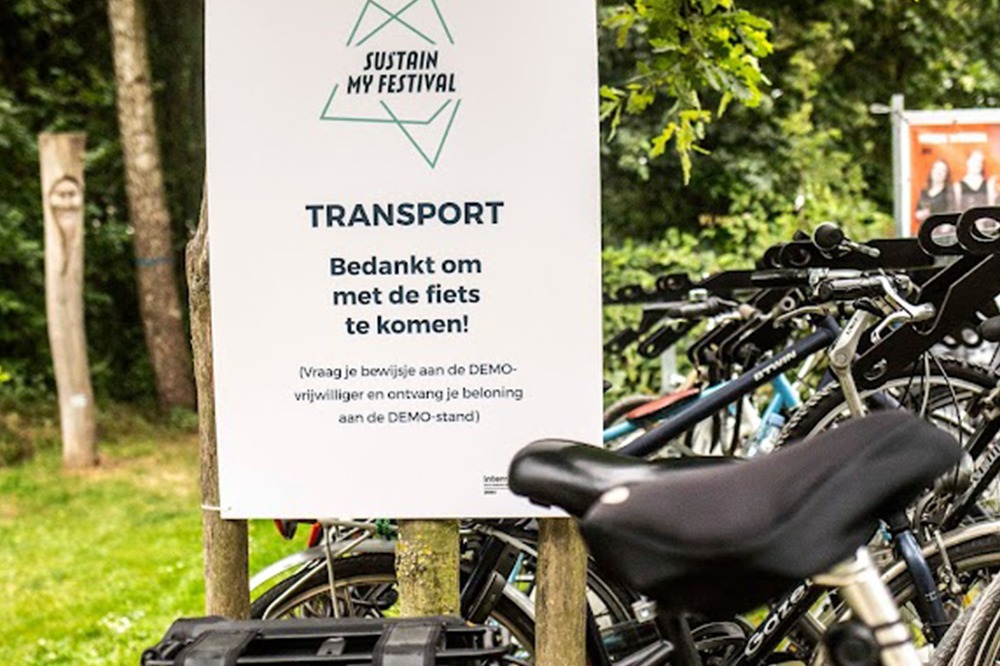In order to better understand a live music event’s carbon emission, and to take action upon it, many organisations have started to measure their carbon footprint. These researches led to interesting results, notably that the most carbon-emitting poles of organising an event are the travels, first of audiences as well as those of artists, especially when they come from far away.
Still, mobility choices and routes are decided by the artists themselves and not left to be decided by the venues/festivals. It is thus the artists who have control over sustainable modes of travel, slower mobility, and other choices that are therefore not part of the artists’ fee or negotiation.
This article presents a bunch of initiatives aiming at reducing carbon emissions regarding mobility: of artists, audiences and cultural workers. Each section presents one initiative in detail, and highlights more succinctly other initiatives.
REDUCE CARBON EMISSIONS FOR ARTISTIC MOBILITY
The mobility of artists, regardless what region of the world they come from and go to, is a key component to cultural exchanges and music discovery. It is time for the live music sector to reflect on current practices that complexify setting-up eco-friendly music events:
- clause of exclusivity on some artists’ contract (which prevents them to play in another music event geographically close to the one they have signed the contract for, during a certain period of time)
- lack of collaboration between live music organisations to make intelligent and coherent touring routes
- cheaper plane tickets compared to other more sustainable means of transportation
- difficulties to travel with big instruments on some train lines…
Such practices should be acted upon in order to create a live music ecosystem which is taking better care of the planet.
Focus on… Le Périscope (FR): carbon budgeting for international artists touring
Le Périscope is situated in Lyon (France). They are involved in Footprints: an EU funded project about how to make music more sustainable across Europe. As part of Footprints, the team worked on a carbon budget.
A carbon budget is an excel sheet, and it works the same as a financial budget, but CO2 tons replaces euros. Indeed, the results of the carbon footprint of Le Périscope demonstrated that most of their impact was on artists’ mobility. Indeed, the venue is based in a city centre with public transport and very expensive car parks, so the audience mobility was less important. The objective of Le Periscope is to reduce by 30% their artistic mobility impact until 2030. Each year, they will reduce it by 3%.
The carbon budget is a simple tool. When adding the dates, the number of people travelling with their transport mode and where they come from, the calculation starts. The most difficult indicator was to decide “which part of the touring relies on Le Periscope?” For example: if a band organises a European tour from Australia: the venue could have only counted their impact between the previous (Paris) and next (Geneva) dates, but they decided to calculate the total impact of the tour of each band and divide it by the number of dates they have.

In that sense, it is still “possible” to book international bands, but the bookers will have to work more closely with each other to add touring dates in order to reduce the carbon impact of each date, and develop more residencies and local actions. One of the main focus of Le Périscope relies on innovative music and international booking, so the idea is not to transform their programming, but to challenge it. So far, the changes cost more money to Le Périscope because booking train tickets rather than flight tickets is more expensive; but they can use their data to apply to more public funding. But that’s also the condition to stay relevant in the future, not lose credibility and audience.
Le Périscope was also involved in the mutualisation of a tour of American band Dave Rempis Percussion Quartet, which only had one date in Le Petit Faucheux venue in Tours, France. Le Petit Faucheux launched a call to other jazz venues in France in order to find other dates for the band to perform in the country, thus making this international artist’s tour more climate friendly and efficient.
Other initiatives on artistic mobility:
- Le Collectif des Festival’s booking cooperation strategies on Artistic Short Circuits
- VEGA in Denmark have a no fly-in policy for the artists they welcome on stage. Read more about it here.
- ESNS festival in the Netherlands launched their ‘Green Touring Support‘, which encouraged artists who played at their 2022 festival to take the train by covering the financial gap between their normal plans and their sustainable travel plans.
- The European Jazz Network presents their Green Pilot Tour project: a tour of an artistic project/band between at least four different venues or festivals and involving at least two EJN members which focuses on innovative touring models based on the principles of sustainable touring and fair and balanced practices in the music sector.
- On The Move released a Green Mobility Guide for the Performing Arts sector
- The Green Touring Guide wishes to point out possibilities and tools for reducing the carbon footprint of a tour and how this can be communicated without being suspected of “greenwashing”.
- Ecolibrium is a sustainable travel guide for artists.
- The information platform Touring Artists offers a section on Green Mobility
- The Green Tour Guide offers tips on sustainable touring for Norwegian music sector
REDUCE IMPACT OF AUDIENCE MOBILITY
A live music event is, first and foremost, the encounter between a musical work and an audience. Because these moments of intensity and sharing have, and give, meaning, the idea is not to impeach such encounters. The goal is even to make them more accessible to everyone, regardless of where they live. Still, a change is needed in how we conceive and give access to such events so as they do not have a negative impact on our planet. Because, if there was no music event, the audience wouldn’t be there, the impact of audience travels relies on the concert organiser. It is important for concert organisers to think of sustainability as well as audience safety, accessibility and inclusion when looking into decisions regarding audience travel.



Focus on… Julie’s Bicycle Report “From Carbon Footprints to Cultural Influence: Engaging Audiences on Travel Choices”
Julie Bicycle released a report displaying 5 recommendations for positively influencing audience travel choices. These recommendations, and the report, were also based on a case study developed at UK-based Shambala festival, where the recommendations could be tested through interviews with festival goers, to see if they would be open to the ideas in the report.
The report provides insightful ideas that festivals can implement to incite audiences to change their attitudes and choices when going to a music event. Still, the report does not overlook the barriers and discrimination that implementing sustainable travel choices can entail.
The recommendations of the report are the following:
| 1. Audiences can be powerful agents of change: Invite audiences to be part of demanding the wider changes needed to break the impasses many events face around travel infrastructure 2. Focus on collective efficacy/agency (what ‘we’ can do; the combined impact ‘we’ can have) and solutions-focused frames so that travel decisions are active/positive choices, not sacrifices or inconveniences: don’t apologise for inviting audiences to be part of positive change 3. Find and amplify human stories that ‘show the change’ rather than focusing on facts and figures. What are the audience values that you can use to frame climate communications for them? 4. Focus on fairness and feasibility: When people perceive a climate policy or a behavioural ‘ask’ to be fair, they are much more likely to support it. 5. Build on the cultural credibility of live events to encourage ‘legacy impacts’: Well-liked live events, with a clear sense of identity and loyal audiences have the cultural credibility to encourage audiences to make wider change in their travel choices, not just around live music. |
Other initiatives on audience mobility:
- Study Boomtown which calculated that audience mobility is the biggest factor of emissions at their festival.
- To help music organisations calculate their audience mobility carbon-emissions, you can use Crowdimpact.
- The venue L’Aéronef in Lille (FR) has developed Aero Easy Go, a webpage inciting their audiences to come to the concerts via sustainable travel options. From reduced train tickets to areas to find people to carpool, co-bike or co-walk together to bike-repair services, they thought of everything! Read an interview about the initiative here.
- The venue Ancienne Belgique in Brussels has a strict policy to end concerts at 22:30, so people can still return home after the concert by train. The audience even gets a reduced train ticket when having a concert ticket. More info here.
- When it’s not possible to go by bike or public transport to a show because you live in a remote and rural area… the concert comes to you! As seen in the project La Tournée des refuges, which organises artists touring by walking in the mountains, or with the project Sound River System, which organises artistic residencies and concerts on a boat, sailing from city to city.
- ESNS Festival collaborates with Choo-Choo for train travel delegates, to help them find sustainable travel options to go to the festival.
- Many organisations have focused on promoting carpooling to travel to music events, such as Ecopassenger or Eurostop carpool in Belgium.
- And because music events are also places to display other ways of seeing the world and living in it, we are fond of these projects by Dour festival and Les 4 Ecluses venue, which organise bicycle rides to either discover the surrounding area or listen to a concert in-between two pedal strokes.
REDUCE IMPACT OF STAFF & CULTURAL WORKERS
Because some of our readers may be working for organisations involved in the European level, we could not refrain from sharing this sustainable travel decision tool created by On The Move, which helps European organisations design their sustainable travel policy.
